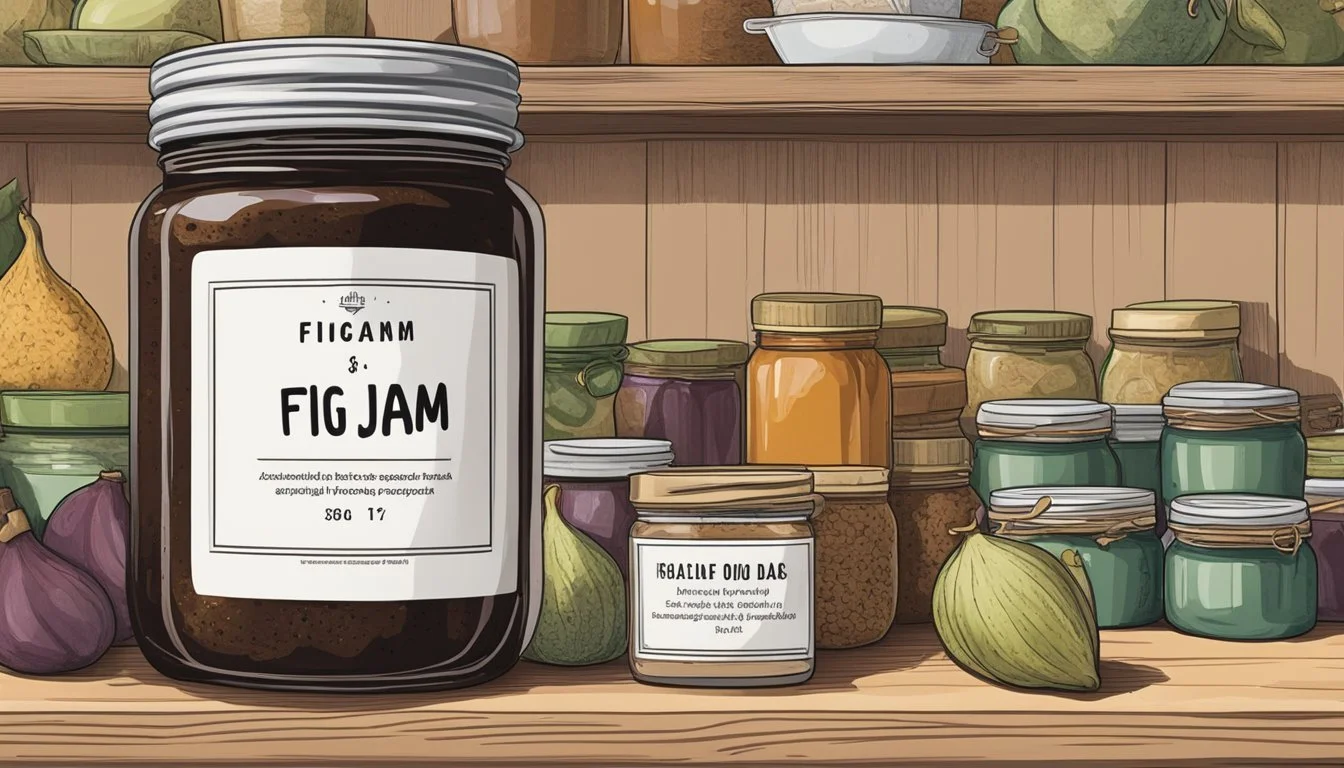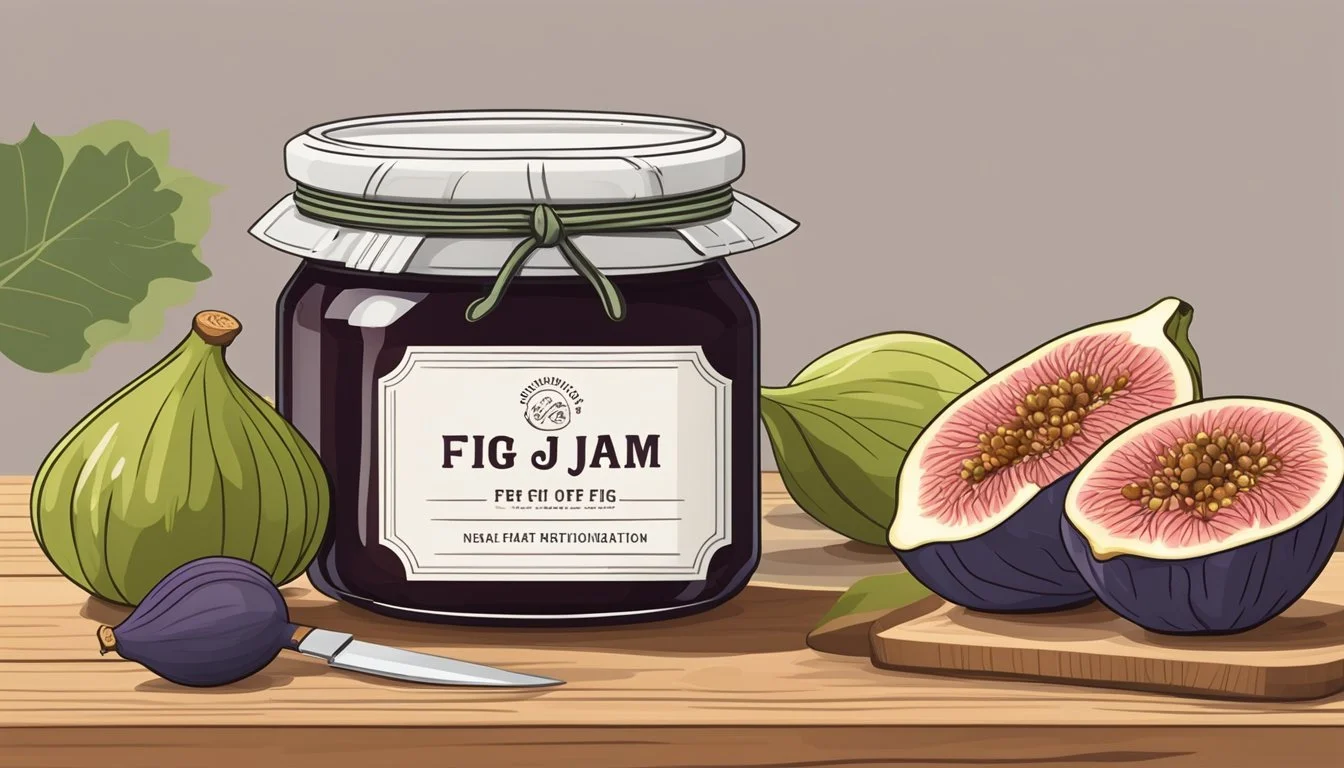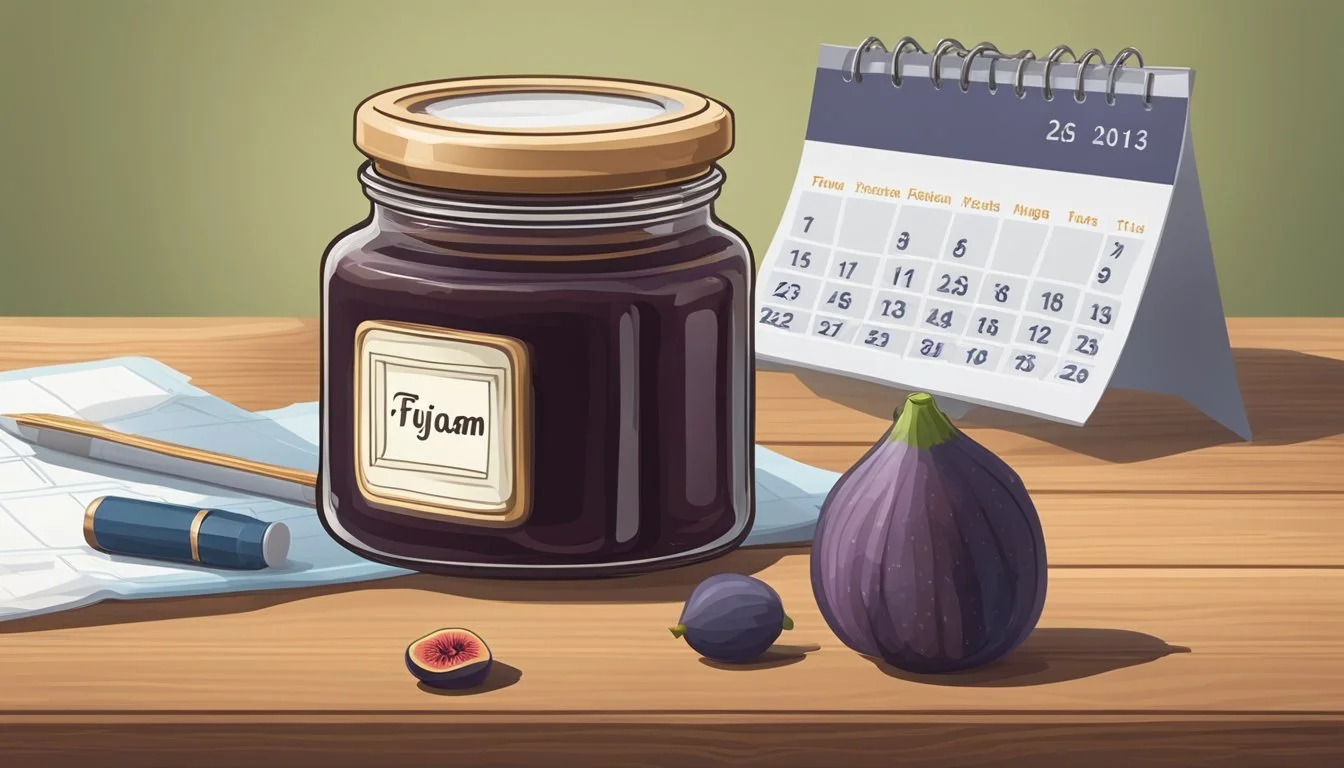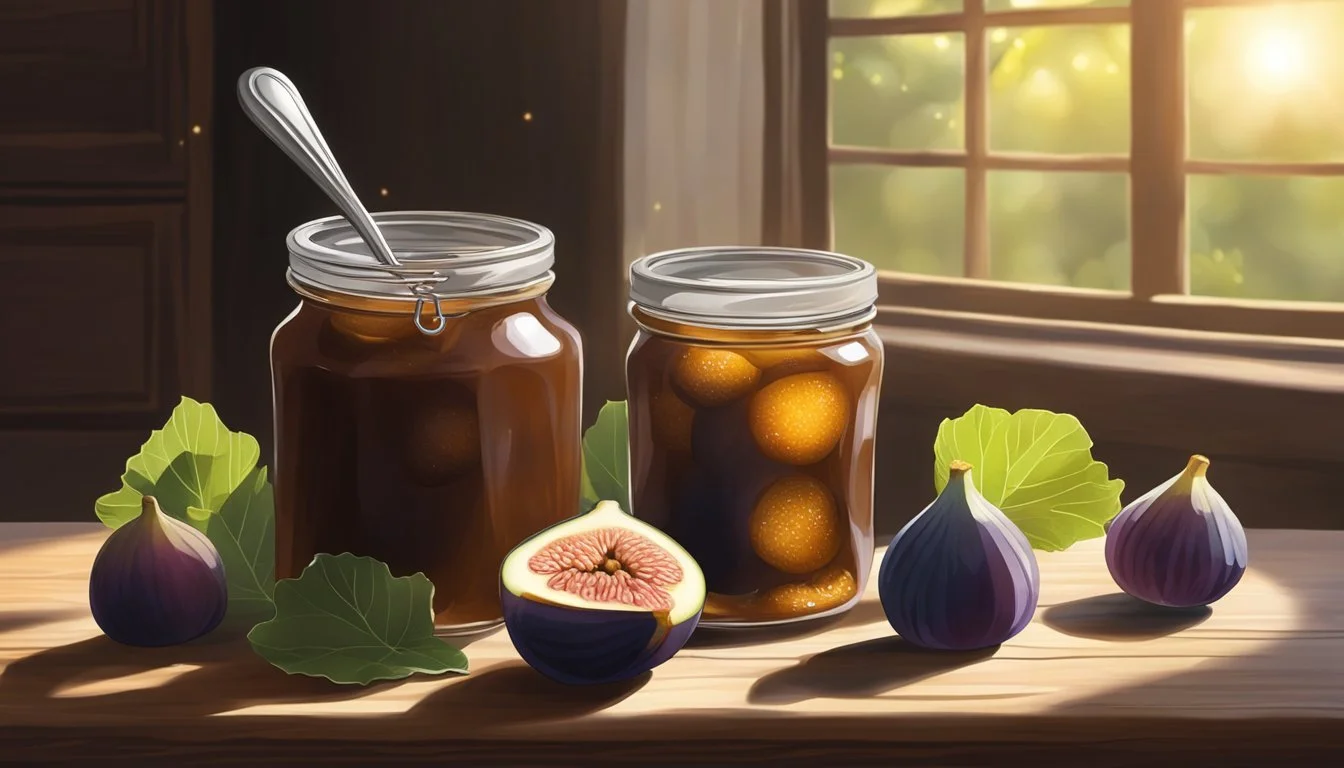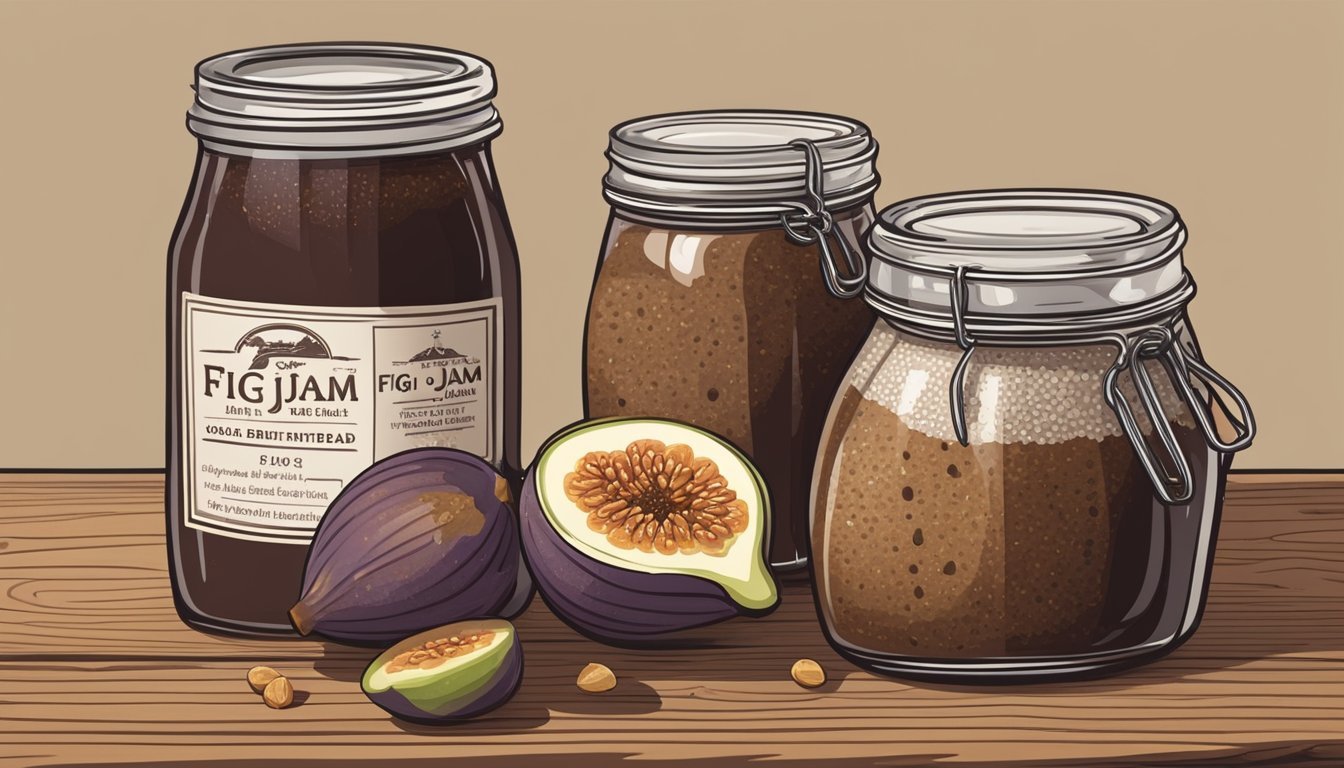How Long Does Fig Jam Last?
Shelf Life and Storage Tips
When it comes to preserving the bounty of fig season, fig jam is a delightful way to capture the fruit's sweet essence. With its rich, complex flavor and versatility, fig jam is enjoyed by many as a spread on bread, an accompaniment to cheese, or even as a glaze for meats. The longevity of fig jam, like many preserved foods, is influenced by various factors including the presence of preservatives, the canning process employed, and the conditions under which it is stored.
Store-bought fig jam typically has a longer shelf life, lasting up to a year unopened due to the commercial sterilization and preservatives used. After opening, it is recommended to consume it within a few months to ensure quality and safety. Homemade fig jam, on the other hand, without preservatives and often made with a simpler canning process, can last for about two years unopened if properly prepared and stored in a cool, dry place. Once opened, it should be kept refrigerated and used within one month to maintain its best taste and prevent spoilage.
The shelf life of fig jam can also depend on signs of spoilage. Consumers should look for changes in color, odor, or the presence of mold, which indicate that the jam should no longer be consumed. Contamination or improper storage may accelerate spoilage, making regular inspection of home-canned goods a good practice for food safety.
Fig Jam Fundamentals
Fig jam is a delightful preserve made from fresh figs, a fruit known for its unique flavor and sweetness. When crafting fig jam, the fundamental ingredients include fresh figs, sugar, and often lemon juice or lemon zest (how long does lemon zest last?). These components work together to create a thick consistency and help to preserve the figs. The sugar not only sweetens the jam but also acts as a preservative.
During the cooking process, heat plays a crucial role in breaking down the figs and sugar into a thick consistency. As the figs cook, natural pectins are released, which helps the jam set after cooling. The addition of lemon juice helps to balance the sweetness of the figs and sugar while also contributing to the gelling process. A splash of water can be added to create the desired texture and prevent the jam from sticking to the cooking pot.
Beyond the basic ingredients, some recipes may include vanilla extract, cinnamon sticks, or other spices to enhance the jam's flavor. Once the jam has reached the appropriate thickness, it’s important to let it cool before transferring it to jars. This allows the jam to set further and develop its signature texture.
Once jarred, fig jam should be stored in the fridge to extend its shelf life. Properly sealed and refrigerated, it can last for several weeks or longer, making it perfect for enjoying the taste of fresh figs well beyond their season. However, introducing a clean spoon each time it's used can prevent contamination and help maintain its quality.
Homemade Fig Jam Crafting
Crafting homemade fig jam involves a few key steps: selecting quality ingredients, following a detailed cooking process, and understanding various culinary applications and storage methods to ensure longevity and taste preservation.
Essential Ingredients
For a basic homemade fig jam, the essential ingredients include:
Fresh figs: The star of the jam, essential for a natural, sweet flavor.
Sugar: Acts as a sweetener and preservative.
Lemon juice: Adds acidity, which helps in setting the jam.
Optional: Honey for sweetness, pectin (how long does pectin last?) for thickening, and spices such as cinnamon or cardamom for flavor.
Step-by-Step Process
Prepare the figs: Wash and chop the figs into small pieces.
Combine ingredients: In a pot, mix figs with sugar, lemon juice, and any additional spices.
Cook: Bring the mixture to a boil, then simmer until it reaches the desired consistency, often checked with a thermometer.
Canning: Transfer the hot jam into airtight containers and seal to extend shelf life.
Culinary Variations
Sweet: Introduce honey or vanilla for a sweeter profile.
Savory: Mix in balsamic vinegar or orange zest to complement cheeses or meats.
Chunky: Reduce the simmering time for a less smooth texture.
Spice-infused: Add spices like cinnamon or nutmeg for an aromatic twist.
Fig Jam Pairings
Homemade fig jam pairs well with a variety of foods such as:
Cheeses: Enhances a cheese board or baked brie.
Meats: Complements chicken or charcuterie.
Breakfast options: Adds flavor to toast, oatmeal, or yogurt.
Appetizers: Served on crostini with goat cheese or as a pizza topping.
Storage Solutions
To store:
Refrigerate: Place in an airtight container; homemade fig jam can last up to six months.
Freeze: Freezing extends the shelf life, keep in an airtight container.
Pantry: Unopened and properly canned, jam can be stored in a dry, dark place for up to two years.
For a smaller batch that isn't intended for long-term storage, refrigerate and consume within a shorter period.
Nutritional Profile
Fig jam offers a sweet touch to breakfast and dessert dishes, and its nutritional profile is an essential aspect to consider. Homemade fig jam primarily contains figs, sugar, and sometimes lemon juice, with variations including additional flavors like vanilla or spices.
Calories: The caloric content of fig jam can vary, with an average of around 50 calories per tablespoon, depending on how much sugar is added during preparation.
Sodium: Figs and sugar, the main components, contain minimal sodium. Homemade fig jam is typically low in sodium, making it a suitable option for those monitoring their intake.
Carbohydrates: Fig jam is high in carbohydrates, with sugar being the primary carbohydrate present. The carbohydrate content usually ranges from 13 to 15 grams per tablespoon.
Fiber: While figs are a good source of dietary fiber, the jam-making process reduces the fiber content. However, fig jam still provides some fiber, contributing to digestive health.
Protein: There is a negligible amount of protein in fig jam.
Sugar: The sugar content in fig jam is significant due to the addition of sugar for preservation and flavor. It includes both natural sugars from figs and added sugars.
Fats: There are no saturated or unsaturated fats in traditional fig jam, unless additional ingredients such as nuts are incorporated.
Table: Approximate Nutritional Values per Tablespoon of Fig Jam
Nutrient Amount Calories ~50 Sodium (mg) <5 Carbohydrates (g) 13-15 Fiber (g) <1 Protein (g) 0 Sugars (g) ~10-12 Saturated Fat (g) 0 Unsaturated Fat (g) 0
These values are estimates and may vary based on the recipe and preparation method. Those watching their sugar intake should opt for fig jams with lower added sugars or make their own to control the sweetness levels.
Serving Suggestions
Fig jam offers a delightful balance of sweet and tart flavors, making it an excellent garnish or complement to various dishes throughout the day.
Breakfast Delights
For a morning treat, fig jam pairs excellently with breakfast staples. Toast can be elevated from simple to sublime with a layer of fig jam on top. In addition, it serves as a perfect sweetener when swirled into oatmeal or slathered over pancakes and waffles. The jam's sweetness juxtaposes nicely with the savory notes of these breakfast foods.
Morning Toast: Spread a generous layer on whole grain or sourdough toast.
Oatmeal Enhancement: Stir a dollop into hot oatmeal for a burst of flavor.
Pancake or Waffle Topping: Use as a substitute for syrup.
Delectable Pairs
Fig jam is not reserved only for sweet applications; it lends itself well to savory dishes too. It can enhance a cheese platter with its rich sweetness, adding a gourmet touch to the selection. It's also a flavorful addition to a grilled cheese sandwich, complementing hard and soft cheeses alike, or can bring an unexpected twist to a burger with a layer of jam beneath the bun.
Cheese Platter: A small bowl of fig jam amidst a variety of cheeses.
Burger Condiment: A spoonful atop the patty before adding toppings.
Grilled Cheese Accent: A layer inside the sandwich pairs well with cheeses like brie or goat cheese.
Dessert Complements
In the realm of desserts, fig jam can be used to enhance the flavor profile of different sweets. Whether it is used as a topping or a filling, fig jam adds a note of sophistication. Additionally, it can be a distinctive flavor alongside peanut butter in sandwiches or desserts, blending the nostalgic with the gourmet.
Peanut Butter Pairing: Combine with peanut butter in a sandwich for a flavorful twist.
Tart Filling: Use as a base layer in tarts or pastry desserts.
Dessert Garnish: A small spoonful atop ice cream, cheesecake, or pastries for a fruit-forward note.
Special Tips and Tricks
Making fig jam is both an art and a science, involving techniques to preserve freshness, enhance flavor, and ensure safety. This section provides targeted advice to help you achieve the best results in your fig jam-making endeavors.
Preserving Freshness
Homemade fig jam can last for up to two years unopened when kept in a pantry, provided it is stored correctly. To maximize the shelf life of fig jam after opening:
Refrigerate: Always keep opened fig jam in a refrigerator to slow down the growth of microorganisms.
Airtight Container: Store fig jam in an airtight container to maintain freshness and prevent contamination.
Enhancing Flavor Profiles
To elevate the taste of easy fig jam and add complexity to its flavor profile, consider the following:
Acidity: A dash of lemon juice not only provides acidity to balance the sweet fig flavor but can also help in the preservation process.
Spices and Extracts: Adding spices such as cinnamon, nutmeg, ginger, or a hint of vanilla extract can give your fig jam an aromatic depth.
For cooking, use medium heat to combine flavors properly without scorching the jam. A thermometer can help monitor the temperature accurately.
Safety and Sanitation
Adhering to safety and sanitation guidelines is crucial in the preparation and storage of fig jam:
Sterile Equipment: Ensure all canning equipment is sterile before use to prevent contamination.
Heat: Use sufficient heat to properly seal jars if canning, which protects against bacteria and extends shelf life.
Remember, never reuse lids when canning, and always check for proper seals on your jars once cooled.
Jams Comparison
In considering the longevity and characteristics of fig jam, one must examine how it compares to other jams, assess the variety in textures, and understand the taste distinctions that define this spread.
Compare With Other Jams
When comparing fig jam with other fruit jams such as blueberry and peach jam, sugar content plays a crucial role in preservation. Most jams contain a significant amount of sugar, which acts as a natural preservative. While fig jam typically has a shelf life up to one year when stored properly in the refrigerator, other jams like blueberry jam may offer a similar expiration timeline, provided they are sealed and stored under suitable conditions.
Variety in Textures
The texture of fig jam often appears chunkier due to the natural presence of seeds and fruit pulp. This contrasts with jams such as blueberry or peach, which can range from smooth to chunky. Preferences in texture vary among individuals, with some opt for seeded spreads, while others seek out a smoother, more gelatinous consistency.
Taste Distinctions
Taste-wise, fig jam offers a unique flavor profile, combining sweet and tart notes, whereas blueberry and peach jams lean predominantly on the sweeter side. The taste of a jam also depends on the type of fruit used and the presence of additional flavorings. The intrinsic flavor of the fruit is highlighted through the jam-making process, with sugars further intensifying the flavor profile.
Advanced Techniques
In crafting high-quality fig jam, advanced techniques focus on ingredient selection and the preparation process to enhance flavor and longevity.
Fig Jam without Pectin
Using no pectin in fig jam can enhance the natural flavor profile of the fruit. Lemon juice plays a critical role here; it not only supplies the necessary acidity for preservation but also adds a subtle tartness that complements the sweetness of the figs. Here's how to proceed:
Prepare the Figs: Thoroughly wash and chop the fruit, removing any blemishes.
Cook with Lemon: Cook the figs with fresh lemon juice; the natural pectin present in the lemon juice will aid the gelling process without the need for additional pectin.
Pro Tip: Add a spoonful of honey for an extra layer of complexity and a smooth, rich finish.
Small-Batch Creation
Creating small-batch fig jam ensures better control over the cooking process and allows for personalization in flavor. Here are the key steps:
Gather Fresh Ingredients: Select ripe, fresh figs for the best taste and minimal cooking time.
Cook in Small Pot: Use a small pot for more even heat distribution and to prevent overcooking.
Note: Smaller batches typically last less time than larger, commercially prepared batches, so it's important to consume them within a shorter window, storing in the refrigerator after opening.
Lifecycle of Fig Jam
The lifespan of fig jam largely hinges on its composition and storage conditions. Typically, homemade fig jam without preservatives exhibits a shorter shelf life than commercially canned variants. Properly sealed in an airtight container, homemade fig jam can last up to two years when stored in a dry, dark place such as a pantry. However, it is critical to adhere to safe canning practices to maximize longevity.
Upon opening, fig jam should be kept in the fridge. The cool environment slows down the spoilage process. In the refrigerator, an opened jar of fig jam will generally remain edible for up to six months. Beyond this period, the quality may deteriorate.
Fresh fig jam, not subjected to canning techniques, requires immediate refrigeration. It will stay fresh for about two weeks when stored consistently at low temperatures. Always ensure the container is sealed properly after each use to maintain freshness and prevent contamination.
For canned fig jam, which has undergone a heat process and sealed hermetically, an unopened jar can maintain its quality for years. Once opened and refrigerated, it also should be consumed within a few months for optimal taste.
State of Fig Jam Storage Location Shelf Life Unopened Homemade Pantry (Cool & Dark) Up to 2 years Opened Homemade Fridge ~6 months Fresh Fig Jam Fridge ~2 weeks Unopened Canned Pantry (Cool & Dark) 2+ years Opened Canned Fridge ~6 months
In all cases, visual and olfactory cues are reliable indicators of spoilage. Any mold, off-odor, or odd appearance signals that the fig jam should not be consumed.
Creative Use Cases
Fig jam is not just a spread for toast; it's a versatile ingredient that can elevate various dishes. Below are some innovative ways to incorporate fig jam into appetizers, main courses, and desserts, transforming simple recipes into gourmet experiences.
Appetizers and Starters
Cheese Boards: Enhance a cheese board with fig jam as a sweet counterpart to a variety of cheeses, especially goat cheese and blue cheese.
Baked Brie: Spread fig jam over baked brie and wrap in puff pastry for a savory and sweet appetizer.
Crostini: Top crostini with fig jam, ricotta cheese, and a drizzle of honey for a quick, elegant starter.
Main Courses Enhancer
Pizza: Dollop fig jam onto pizza with gorgonzola, arugula, and prosciutto for a perfect balance of sweet and savory.
Burgers: Add a layer of fig jam on a burger with blue cheese for a rich, complex flavor.
Peanut Butter Sandwiches: Combine fig jam with peanut butter for a gourmet twist on the classic PB&J.
Exquisite Dessert Finishes
Dessert Toppings: Incorporate fig jam into desserts by using it as a topping for pancakes or waffles, complementing the sweetness with its rich flavor.
Peach Desserts: Combine fig jam with fresh peach slices for a delectable filling in tarts and pastries.
Dessert Sauces: Create a fig jam sauce to drizzle over ice cream or cheese-filled crepes for an indulgent finish.
Health Benefits and Dietary Considerations
When considering the inclusion of fig jam in one's diet, it is important to take note of its nutritional attributes and how they can impact dietary goals. Fig jam generally retains the health benefits of its primary ingredient, figs, which are a source of various nutrients.
Nutritional Content per 100g of Fig Jam:
Calories: Approximately 250-300
Protein: 0.3-1g
Fiber: 1-2.5g
Sugars: High (exact amount varies)
Saturated Fat: Low
Unsaturated Fat: Low
Consuming fig jam provides a quick energy source due to its high sugar content, which should be eaten in moderation, especially for those monitoring their sugar intake. While it is not a significant source of protein, fig jam contains some fiber, which can aid in digestion.
Figs are naturally rich in dietary fiber, essential for a healthy digestive system, and they also offer a modest amount of vitamins and minerals. However, during the jam-making process, some nutrients might be reduced while sugars are often added, hence altering the health benefits compared to fresh figs. Individuals who are managing their calorie and sugar intake for health or weight reasons may need to consume fig jam sparingly.
The jam contains minimal saturated and unsaturated fats, making it a low-fat addition to meals. This can be advantageous for those following a low-fat diet. It is also pertinent to note that store-bought fig jams may contain different additives and preservatives, potentially affecting their nutritional profile. Homemade fig jam allows for better control over the ingredients, potentially leading to a healthier product.
Frequently Asked Questions
This section addresses common queries regarding the storage, shelf life, and allergens related to fig jam.
Shelf Life and Expiration
Fig jam, irrespective of whether it is purchased from a store or made at home, has a finite shelf life. An unopened jar of fig jam typically lasts for up to two years if it is stored in a cool, dark place like a pantry. Once opened, the jam should be stored in the fridge in an airtight container to slow down the deterioration process; it should ideally be consumed within one month to maintain optimal taste and safety.
Homemade vs. Store-Bought
Homemade fig jam generally lacks commercial preservatives, which can affect its longevity compared to store-bought varieties. Homemade fig jam can last up to two years in the pantry when properly canned and sealed. Once opened, it should be refrigerated and can last anywhere from 1-3 weeks. Store-bought jams, due to preservatives, may last slightly longer in the fridge after opening.
Allergen Information
Fig jam is naturally free from common allergens such as gluten, dairy, and eggs. However, individuals with allergies to figs themselves or cross-reactive allergens such as birch pollen should avoid fig jam. Homemade fig jam recipes may include ingredients like seeds or nuts for texture or flavor, which are common allergens and should be clearly labeled to inform those with sensitivities. Commercial fig jam should have an allergen statement on the packaging, which consumers need to review prior to consumption.
Conclusion
The shelf life of fig jam depends significantly on its processing and storage conditions. Homemade fig jam, when made without preservatives, can typically last for up to two years unopened in the pantry. However, once opened, the jam should be consumed within six months to ensure freshness, and it is advisable to store it in the refrigerator during this time.
For store-bought fig jam, one should always check the expiration date provided by the manufacturer. After opening, similar rules apply – it should be refrigerated and preferably used within six months to maintain quality and prevent spoilage.
To summarize key points, here's a simple table:
Fig Jam Type Pantry (Unopened) Refrigerator (Opened) Homemade, No Preservatives Up to 2 years 6 months Store-Bought Check expiration 6 months
To prevent fig jam from spoiling, it is crucial to practice proper hygiene and use clean utensils when serving. Signs of spoilage include an off odor, mold growth, or a change in color or texture. Should any of these signs be present, it's important for one's safety to discard the jam.
In short, consumers can enjoy the rich flavor of fig jam for an extended period by following these guidelines, thereby ensuring both safety and quality.

